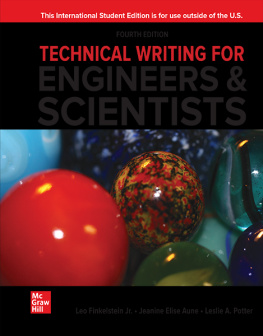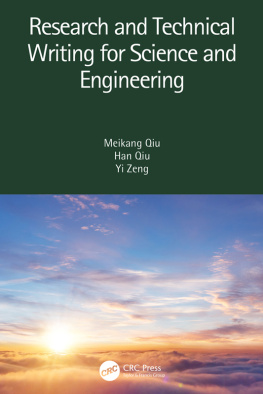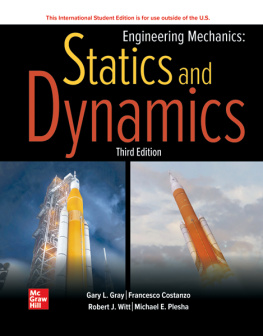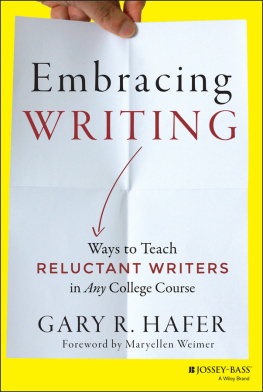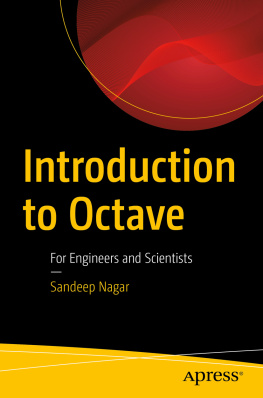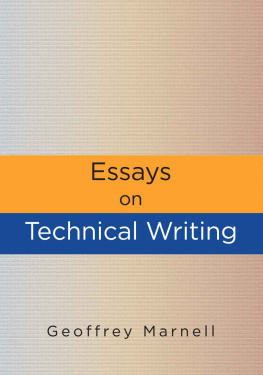
Page ii

TECHNICAL WRITING FOR ENGINEERS & SCIENTISTS
Published by McGraw Hill LLC, 1325 Avenue of the Americas, New York, NY 10019. Copyright 2023 by McGraw Hill LLC. All rights reserved. Printed in the United States of America. No part of this publication may be reproduced or distributed in any form or by any means, or stored in a database or retrieval system, without the prior written consent of McGraw Hill LLC, including, but not limited to, in any network or other electronic storage or transmission, or broadcast for distance learning.
Some ancillaries, including electronic and print components, may not be available to customers outside the United States.
This book is printed on acid-free paper.
1 2 3 4 5 6 7 8 9 LWI 27 26 25 24 23 22
ISBN 978-1-265-26219-8
MHID 1-265-26219-5
Cover Image: Leslie A. Potter
All credits appearing on page or at the end of the book are considered to be an extension of the copyright page.
The Internet addresses listed in the text were accurate at the time of publication. The inclusion of a website does not indicate an endorsement by the authors or McGraw Hill LLC, and McGraw Hill LLC does not guarantee the accuracy of the information presented at these sites.
mheducation.com/highered
Page iii
Dedication
In memory of Dr. Leo Finkelstein, Jr. We are honored to continue his legacy.
This has been one of my favorite projects of all time due, in no small part, to the support of and collaboration with some of my favorite people. It is dedicated to Siggi for unwavering support, to my children for just being, to my pets and pony for the cuddles and chances to recharge my soul, to my mom for being my cheerleader, to my siblings for their wit and humor, and to the legendary Grandma Glenna for showing me the way to teaching and about not letting ones standards slip. And last but not least, to Leslie, for her creativity, enthusiasm, and for keeping my nose to the grindstone.
Jenny
I have always loved language: it was difficult for me to choose between a career in engineering and a career in English. I am grateful for the opportunity to combine both interests in this book and couldnt have asked for a better writing partnerthank you, Jenny! I dedicate it to John, for all that he has done these past 30 years to make it possible for me to tackle this project; as well as to our three boys for their never-ending good humor, generosity of spirit, and willing assistance; to my parents for giving me the best of each of themselves, including my moms amazing editing skills and my dads spot-on advice; to my brother who supports me always;and to my in-laws whom I love dearly. Shout-out to my dogs, too, who keep me grounded.
Leslie
Page iv
Preface
Purpose
The purpose of this book is to succinctly explain the content and structure of concepts and genres common to communication in engineering and science disciplines. Much like Dr. Finkelstein did in the first three editions, we aim to avoid the sterile, encyclopedic treatment of writing concepts that exists in many textbooks about writing. While such textbooks can be helpful for writing instructors who want to cover all of the ins and outs of technical writing theory, concepts, strategies, and genres in writing classes, such comprehensive textbooks might not be the most useful for instructors looking to incorporate writing assignments into their already-packed classes, or for students looking for the nitty-gritty details about what they need to do to get the writing project done in their engineering and science classes.
Approach
Our approach to revising this textbook was based on our combined 50+ years of teaching experience. We have endeavored to bring our approach to teaching to Technical Writing for Engineers and Scientists, 4th edition.
Theoretical Foundation
Technical communication is most effective when it considers audience, purpose, and context. Audiences can be categorized in many ways, but one of the most utilitarian methods is to think of them as decision-makers, advisors, and implementors. For example, when you are writing an abstract or summary, you are typically writing for decision-makers and/or advisors. When you are researching and writing a feasibility or recommendation report, you are writing for decision-makers and advisors. When you are writing descriptions or instructions, you are most likely writing for implementors. We have considered these three categories of audience as we have revised the content in this book.
In addition to audience, technical communication is most effective when it considers purpose and context. If we have been hired by the CEO and founder of a major pasta producer to write a report on the feasibility of moving a pasta factory to the upper Midwest, and we write a description of a pasta factory and its components, we will have singularly failed in understanding our purpose. The CEO is already familiar with a pasta factory; they need an evaluation of a solution based on a set of criteria, like proximity to rail lines for shipping raw ingredients. As technical writers, we must anticipate how our communication will be used and in what context. For example, electronic instructions for an executive in their corner office have an entirely different context than those required by a worker standing underneath a molten iron transfer line in a foundry.
Restructured for Easier Understanding
Over the years, we have learned that our students do best when they can see a finished example before we get into the detailsmuch like assembly instructions and recipes, it helps the implementor to look at a picture of the final product before they begin crafting it. Therefore, we restructured the textbooks genre chapter content to provide a definition first, followed by an overview, a basic general outline, a complete example, that example broken down into the logical moves that the writer needs to make, and if relevant, additional examples illustrating the range of that technical writing genre. The intent is that students see the overall document to get a feel for it before they examine the breakdown of the components in that example document.
We have also incorporated references to other chapters along with small excerpts of copied-and-pasted text throughout most of the book. We did this to facilitate the use of individual chapters rather than expecting a student to read and remember the entire book. Bonus: repetition is how we move knowledge into our long-term memory.
Analogies
Over our years of teaching, we have developed the tendency to explain new concepts and ideas to students using analogies (lightbulb moments!). In this revision, we also tried to connect technical writing concepts and genres to a framework with which (we hope!) students are familiar. While not everyone loves dogs, and some may be allergic or even avoid canines for religious reasons, we anticipate that most everyone will at least be familiar with the concept of the dog, its multiple variations and roles in society, and purposes behind those variations. We hope that our readers find the analogies helpful, if somewhat wacky, in learning about technical writing concepts and genres.
Page v
Although we do assume that most everyone is familiar with dogs in general, we do not assume that everyone knows all of the various dog species by name, and here we took our own advice from on Technical Definitions:
Next page
